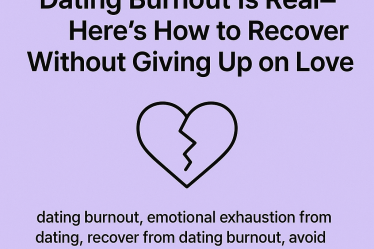
Breakups are brutal. Whether it ended with a slow fade or a fiery explosion, the silence that follows can be deafening. That’s where the no-contact rule comes in — a strategy that promises healing, clarity, and maybe even a second chance. But does it actually work? Or will it leave you with more questions, more pain, and no closure?
In this article, we’re getting real about the no-contact rule. You’ll learn what it is, why people swear by it, when it works, when it doesn’t, and what to expect if you’re brave enough to try it. Let’s break it down.
What Is the No-Contact Rule?
The no-contact rule means cutting off all communication with your ex after a breakup. No texting. No liking their posts. No “just checking in.” For many, the standard version lasts 30 days, but some go longer — 60, even 90. The point? Space.
It’s not about playing games. It’s about protecting your peace and creating distance to clear your head.
Why it’s used:
- To heal emotionally
- To rebuild your identity
- To avoid unnecessary drama
- To give both people breathing room
Think of it as emotional detox. You can’t think clearly about someone when you’re still talking to them every other day.
How the No-Contact Rule Impacts Your Mind and Emotions
At first, it sucks. You might feel panic, sadness, even physical withdrawal. That’s normal.
Breakups trigger the same part of the brain that lights up during drug withdrawal. Dopamine drops. Anxiety rises. You start romanticizing everything — even the bad parts. This is your brain grasping for comfort and routine.
But here’s the turning point: if you stick it out, the emotional fog lifts.
Here’s what happens:
- You start thinking more clearly
- Emotional dependency starts to fade
- You stop reacting, and start reflecting
Therapists call this “emotional re-regulation.” Basically, your nervous system calms down and your thoughts stop spiraling. That’s where healing begins.
Why the No-Contact Rule Works (for Most People)
Done right, no-contact creates space — and space is powerful.
Here’s what it actually does:
- Resets the dynamic: Without constant contact, both people have time to think without influence.
- Breaks toxic cycles: You stop arguing, obsessing, or relapsing into emotional ping-pong.
- Rebuilds self-worth: When you’re not chasing someone, you remember who you are without them.
- Improves the odds (if you do want them back): People notice your absence more than your presence when they’ve taken you for granted.
It’s not magic. But for many, it’s the wake-up call that leads to real emotional growth — whether that leads back to the relationship or forward into something better.
When the No-Contact Rule Might Not Work
Let’s be clear — this isn’t a fix-all. There are times when no-contact can backfire or cause more confusion than clarity.
It may not work when:
- You’re using it to manipulate them into missing you
- There are shared obligations (kids, pets, finances) that require ongoing communication
- You ghost instead of explain — no-contact without closure can hurt both sides more
- Your attachment style needs different boundaries — anxious types may spiral without guidance or support
Also, if the breakup happened due to deep emotional or physical abuse, no-contact might be necessary for safety — but that’s a different situation entirely, and professional support is key.
How to Stick to the No-Contact Rule Without Slipping
Let’s be honest — staying silent is hard. You’ll be tempted. You’ll want to text them just one more time. Don’t.
Here’s how to stay strong:
- Block or mute their number/socials — protect your peace.
- Delete reminders — photos, gifts, playlists — out of sight, out of mind.
- Set a no-contact timer — track your progress.
- Find accountability — tell a friend or journal your urges.
- Fill your time — workout, travel, read, create. Stay busy.
Think of no-contact like a breakup bootcamp. Every day you resist reaching out, you rebuild your strength.
What Happens After the No-Contact Period Ends?
So you made it 30 days (or more). Now what?
Here’s what you can expect:
- Emotional clarity: You’ve had time to think without pressure.
- Stronger boundaries: You’ll feel less reactive and more grounded.
- Less obsession: They don’t take up as much space in your head.
- Decision time: Do you want to reach out? Do you want to move on?
If they reach out first — don’t rush. Reflect. Do they want to reconnect or just soothe their ego?
If you do reach out:
- Keep it short and clear
- Avoid rehashing the past right away
- Stay emotionally neutral
Green flags to reconnect:
- Both of you have done real self-work
- Clear communication and accountability
- Shared willingness to build something better
Red flags to stay away:
- They still deflect, blame, or breadcrumb
- You feel anxious or desperate talking to them
- Nothing has actually changed
Conclusion:
The no-contact rule isn’t about winning someone back — it’s about winning yourself back. It’s uncomfortable at first, but it creates space for growth, clarity, and self-respect.
So, should you try it?
If you’re stuck in heartbreak, spinning in circles, or craving peace — yes. Silence might be the most powerful move you can make. Not to punish them, but to free you.
Break free or regret it?
Choose the break. You deserve to find out who you are when no one’s pulling your strings.



